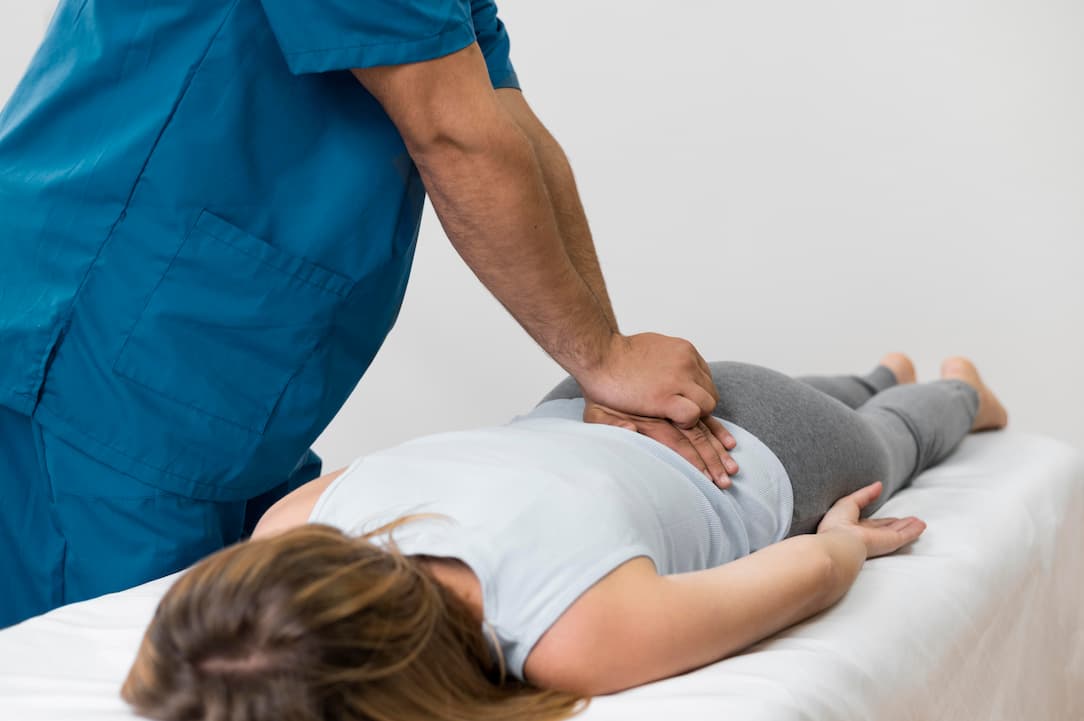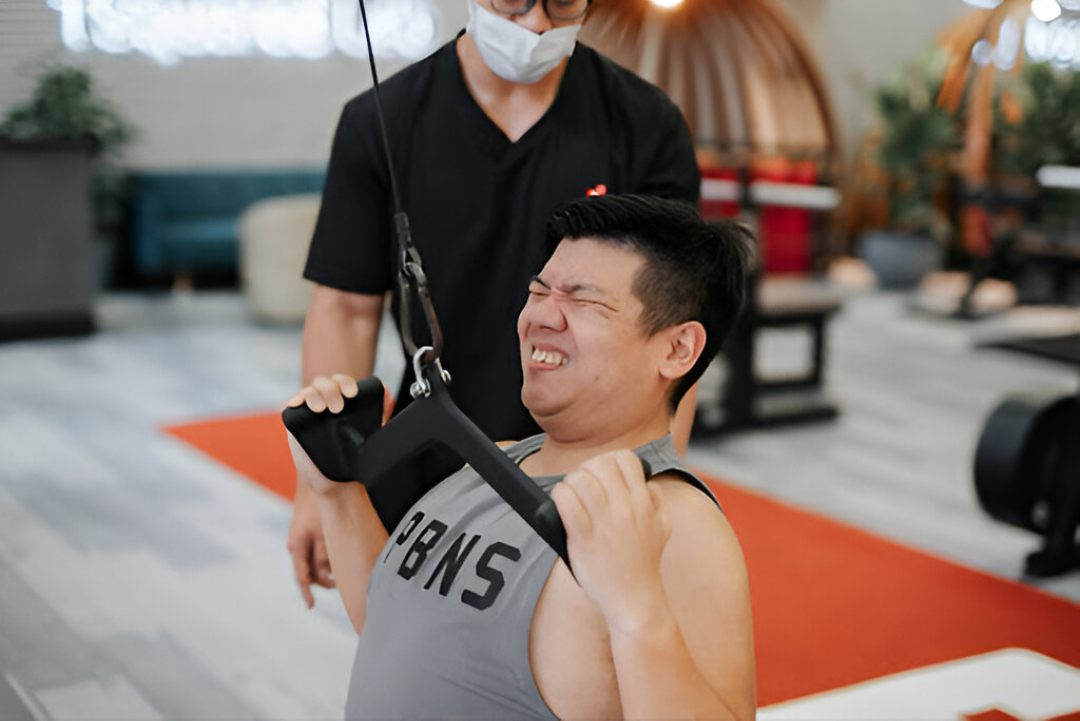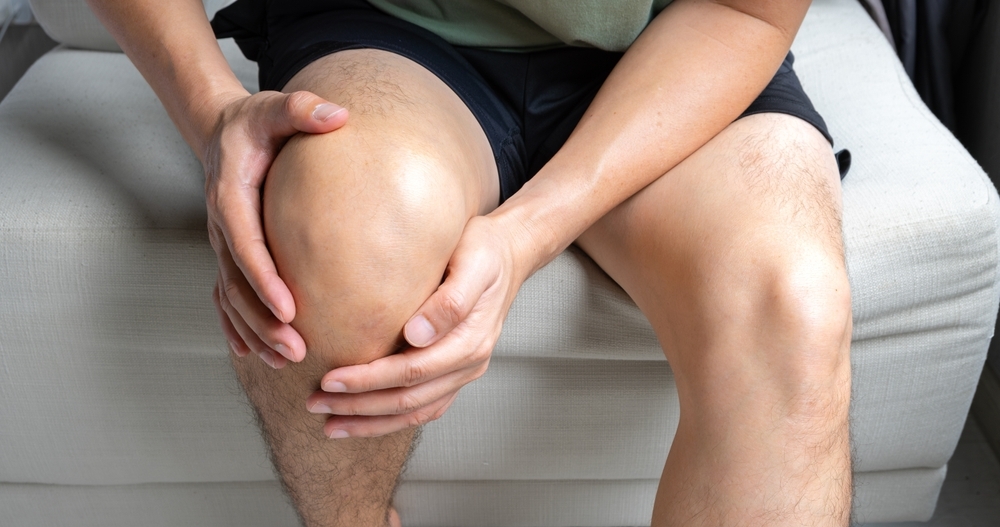Manual Therapy and Sciatica: A Natural Pain Relief Approach
If you’ve been dealing with sciatica, you know how disruptive it can be. The sharp, shooting pain from your lower back down your leg can affect your ability to sit, walk, or sleep comfortably.
While painkillers may temporarily mask discomfort, the truth is that they don’t address the underlying cause of your pain.
If you’re looking for long-term solutions that target the root cause of your pain, manual therapy for sciatica is the approach for you.
Let’s see how and why it works.
Understanding the Root of Sciatic Pain
Sciatica is a symptom caused by pressure or irritation of the sciatic nerve.
This pressure can result from a number of causes. Herniated disc, spinal stenosis, tight muscles in the hips or lower back, and long-term postural habits are some of the most common ones.
When the nerve is compressed or irritated, inflammation develops, triggering the characteristic sharp, shooting pain that radiates down the leg.
Understanding this mechanism is essential for effective treatment, but unfortunately, many approaches only manage the symptoms, leaving the underlying cause untreated.
By focusing on the nerve, muscles, and surrounding tissues, sciatica manual therapy addresses the mechanical and structural issues that contribute to pain. This offers more sustainable relief and prevents recurring episodes.
The Role of Manual Therapy in Restoring Function
Manual therapy works by manipulating joints, muscles, and connective tissue to restore proper movement and alignment.

When it comes to sciatica, this approach has multiple objectives:
1. Reduce nerve compression: Gentle manipulation of the spine and pelvis can relieve pressure on the sciatic nerve, decreasing irritation and discomfort.
2. Release muscular tension: Targeting tight muscles in the hips, glutes, and lower back reduces strain and promotes natural movement patterns.
3. Enhance circulation: Improved blood flow encourages healing and decreases inflammation in affected areas.
Unlike medications that merely mask pain, manual therapy actively addresses the cause, restoring function and giving you the tools to maintain long-term mobility.
Techniques That Make a Difference
Several manual therapy techniques for sciatica have proven effective. The three main ones are joint mobilization and manipulation, soft tissue release, and nerve mobilization.
In the first one, joint mobilization and manipulation, by focusing on gently moving spinal joints and the pelvis, therapists can correct misalignments that contribute to nerve pressure.
This improves spinal mobility and often provides immediate relief from stiffness and pain.
Tight muscles surrounding the sciatic nerve can exacerbate symptoms. Soft tissue release techniques, such as massage, trigger point release, and myofascial stretching, work to reduce tension and support better posture and flexibility.
Lastly, specific movements encourage the sciatic nerve to glide smoothly through surrounding tissues, reducing irritation.
These exercises, focused on nerve mobilization, are often combined with gentle stretches, which help maintain flexibility and prevent future flare-ups.
A combination of these methods in addressing sciatica ensures that treatment is thorough and effective.
Why a Personalized Approach Matters
No two cases of sciatica are identical. Factors such as nerve compression location, muscle imbalances, lifestyle habits, and even previous injuries affect how pain manifests.
A standardized treatment plan often falls short because it cannot account for these variations. That’s exactly why manual therapy for sciatica thrives on customization.
Skilled therapists assess your posture, movement patterns, and pain triggers to design a plan specifically for your body. This approach makes it more likely to have lasting results.
Integrating Manual Therapy Into a Broader Recovery Plan
Manual therapy works best when it’s part of a holistic plan that also includes:
Strengthening exercises: Core and lower back exercises help stabilize the spine, reducing pressure on the sciatic nerve.
Posture awareness & ergonomics: Correcting posture while sitting, standing, or lifting prevents unnecessary stress on the lower back.
Lifestyle adjustments: Incorporating movement breaks during prolonged sitting, staying active with low-impact exercises, and maintaining a healthy weight all help reduce the recurrence of sciatic pain.
Safety and Suitability of Manual Therapy for Sciatica
When it comes to manual therapy, it’s crucial to work with a qualified therapist. Dealing with muscles, nerves, and joints calls for expert knowledge and experience to prevent injury and ensure great results.

What’s more, certain conditions, such as severe nerve damage, fractures, or infections, may make manual therapy inappropriate or require medical oversight.
A thorough assessment by a competent professional ensures that treatment is appropriate, safe, and effective for your condition.
Additionally, therapists continuously monitor your response to therapy and adjust techniques to match your progress, tolerance, and comfort levels.
The Long-Term Value of Choosing a Natural Path
Choosing manual therapy for sciatica offers benefits that extend beyond temporary pain relief. Here are the most valuable benefits of manual therapy when dealing with sciatica:
Sustainable pain Management: By addressing mechanical causes, therapy gives you long-lasting relief that medication or passive treatments alone can’t.
Improved Mobility & Function: Proper alignment and reduced muscular tension enhance your everyday movement and allow you to perform daily activities comfortably.
Empowerment & Education: Patients learn how to manage their condition, understand their body mechanics, and prevent future episodes, which gives them confidence and control over their health.
Taking a natural approach to sciatica relieves pain, but maybe more importantly, it reduces reliance on medication and helps you reclaim an active lifestyle.
Take Charge of Your Sciatica Recovery
Chronic pain and its psychological effects can impact every aspect of your life, but manual therapy for sciatica offers a proactive and natural path to relief.
It addresses nerve compression, muscle tension, and movement patterns, which leads to lasting improvements.
With the right combination of hands-on therapy, exercise, posture correction, and lifestyle adjustments, you can feel better and be truly pain-free.
Taking this step is a commitment to long-term health and a pain-free future.
Reclaim Your Life with Expert Manual Therapy
If sciatica is holding you back, it’s time to take control. At Expert Manual Therapy, we specialize in personalized, hands-on manual therapy designed to relieve pain, restore mobility, and improve your overall quality of life.
Our experienced therapists combine proven manual techniques with individualized recovery plans to ensure your body heals safely and effectively.
Schedule a consultation today and take the first step toward lasting relief, better movement, and renewed confidence.




 Keep unilateral and corrective work in your plan to stay balanced. Gradually return to pre-injury loads while monitoring form, fatigue, and feedback.
Keep unilateral and corrective work in your plan to stay balanced. Gradually return to pre-injury loads while monitoring form, fatigue, and feedback.








![The Importance of Post-Surgical Physical Therapy [Expert’s Insights]](https://www.expertmanualtherapy.com/wp-content/uploads/2025/01/shutterstock_2264765519.jpg)











